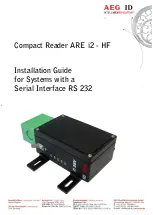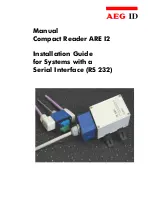
Programming 51
Local
Control
and
Status
Register
1
Bit
Definitions
Bit
31:
Status
LED
–
The
board
contains
a
user
defined
RED
status
LED.
Setting
this
bit
low
(0)
turns
OFF
the
LED.
The
default
state
of
this
bit
after
reset
is
high
(1)
and
the
LED
will
be
ON.
Bit
30:
Transmitter
Disable
–
Setting
this
bit
high
(1)
will
manually
turn
OFF
the
board’s
transmitter.
The
default
state
of
this
bit
after
reset
is
low
(0)
and
the
transmitter
is
enabled.
When
turning
the
board’s
transmitter
back
ON
by
setting
this
bit
back
to
low
(0),
an
unspecified
amount
of
time
must
be
allowed
to
provide
for
the
turn
‐
on
time
of
the
optics.
Bit
29:
Dark
‐
on
‐
Dark
Enable
–
When
this
bit
is
set
high
(1),
the
board’s
transmitter
will
be
turned
OFF
if
the
board’s
receiver
does
not
detect
a
signal
or
if
the
receiver
detects
invalid
data
patterns.
The
dark
‐
on
‐
dark
feature
is
useful
in
hub
configurations.
Bit
28:
Loopback
Enable
–
When
this
bit
is
set
high
(1),
the
fiber
optic
transmitter
and
receiver
are
disabled
and
the
transmit
signal
is
looped
back
to
the
receiver
circuit
internally.
This
allows
basic
functional
testing
with
or
without
an
external
cable.
Bit
27:
Local
Memory
Parity
Enable
–
When
this
bit
is
set
high
(1),
parity
checking
is
enabled
when
reading
from
the
RFM
‐
5565
SDRAM.
Note
that
parity
works
only
on
32
‐
bit
and
64
‐
bit
accesses.
Byte
(8
‐
bit),
Word
(16
‐
bit),
and
24
‐
bit
memory
write
accesses
are
inhibited
while
parity
is
enabled.
Bit
26:
Redundant
Mode
Enabled
–
When
this
bit
is
set
high
(1),
redundant
mode
of
network
transfers
has
been
enabled.
This
bit
is
read
‐
only.
Redundant
mode
is
enabled
by
setting
switch
S1
position
1
in
the
ON
position.
Bit
25:
Rogue
Master
1
Enabled
–
When
this
bit
is
set
high
(1),
the
board
is
operating
as
Rogue
Master
1.
This
bit
is
read
‐
only.
Rogue
Master
1
operation
is
enabled
by
setting
switch
S1
position
6
in
the
ON
position.
Bit
24:
Rogue
Master
0
Enabled
–
When
this
bit
is
set
high
(1),
the
board
is
operating
as
Rogue
Master
0.
This
bit
is
read
‐
only.
Rogue
Master
0
operation
is
enabled
by
setting
switch
S1
position
5
in
the
ON
position.
Bit
23:
Reserved
–
This
bit
is
reserved.
Bits
22
and
19:
Window
1
and
Window
0
–
The
PCI
PIO
window
size
is
selected
by
setting
S1
switch
positions
3
and
4.
Bit
19
(Window
0)
is
connected
to
S1
switch
position
3
(‘1’
when
ON,
‘0’
when
OFF).
Bit
22
(Window
1)
is
connected
to
S1
switch
position
4
(‘1’
when
ON,
‘0’
when
OFF).
These
two
bits
indicate
the
memory
PCI
PIO
window
size
as
defined
in
the
following
table.
The
two
bits
are
read
only.
















































